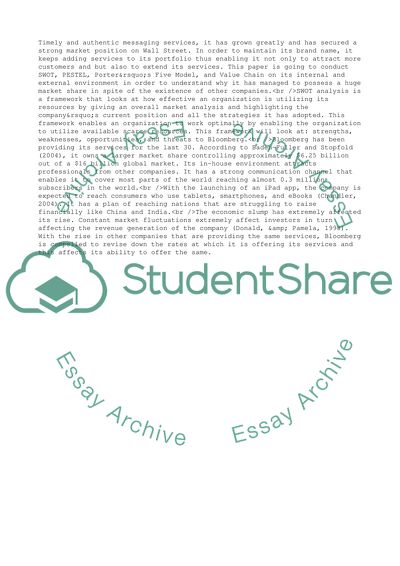Cite this document
(Strategic Administration Analysis System of Bloomberg Case Study Example | Topics and Well Written Essays - 1750 words, n.d.)
Strategic Administration Analysis System of Bloomberg Case Study Example | Topics and Well Written Essays - 1750 words. https://studentshare.org/management/1861889-strategic-environmental-analysis-system
Strategic Administration Analysis System of Bloomberg Case Study Example | Topics and Well Written Essays - 1750 words. https://studentshare.org/management/1861889-strategic-environmental-analysis-system
(Strategic Administration Analysis System of Bloomberg Case Study Example | Topics and Well Written Essays - 1750 Words)
Strategic Administration Analysis System of Bloomberg Case Study Example | Topics and Well Written Essays - 1750 Words. https://studentshare.org/management/1861889-strategic-environmental-analysis-system.
Strategic Administration Analysis System of Bloomberg Case Study Example | Topics and Well Written Essays - 1750 Words. https://studentshare.org/management/1861889-strategic-environmental-analysis-system.
“Strategic Administration Analysis System of Bloomberg Case Study Example | Topics and Well Written Essays - 1750 Words”. https://studentshare.org/management/1861889-strategic-environmental-analysis-system.


